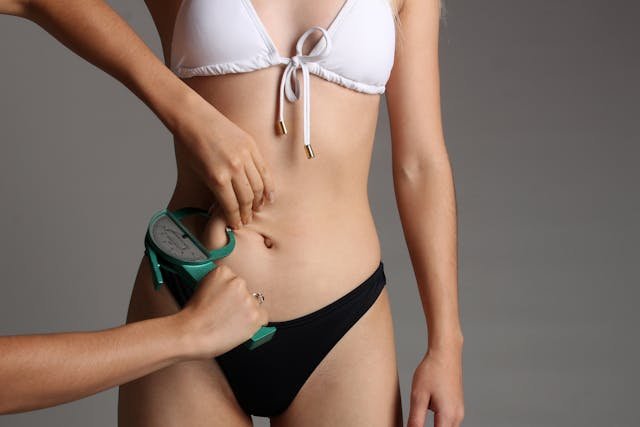
How Can Parents Help Their Children Develop a Positive Body Image?
To find out how, I read a few blogs, scrolled through Instagram posts by parenting experts I admire for their genuine insights, and even watched a few YouTube videos.
And finally, I found an answer: I’m doing fine as a mother, inculcating body positivity in my daughters. But even then, kids can still get swayed by celebrity culture, social media, and peer pressure.
Why was I suddenly so interested in this topic?
A few weeks back, I overheard my daughter and her friends chatting excitedly about Blackpink’s Lisa: how perfect she looked. One by one, they began comparing their bodies to their favourite K-pop idols. Too fat. Too thin. Too brown. Too hairy. Their giggles slowly turned into sighs.
It was disheartening.
As a mom who keeps telling her children that being unique is a strength—not a flaw—it hurt to see how little those words were sinking in.
That moment made me pause and think deeply: how can I help my daughter feel more confident about her body?
If you’ve ever asked yourself the same question, you’re not alone. But let’s not give up and act and talk in ways that make our sons and daughters more confident in their bodies. There are gentle, practical ways to guide our kids toward self-love, even in a world filled with filters, flawless celebrities, and social media pressure.
Early Conversations and Cultural Differences
I had started addressing body image with my daughters from an early age. We live in Mumbai, where our immediate circle doesn’t draw attention to my daughter’s brown skin. However, when we visit Guwahati, the atmosphere changes. From domestic helpers to relatives and elders, people often comment on her complexion. This stark contrast prompted me to take further steps.
I began introducing my daughter to powerful role models and inspirational figures. I talked about historical icons like Cleopatra and Sita, as well as modern-day figures like Lisa Haydon, Nyakim Gatwech, and Anok Yai. I also mentioned fictional characters like Moana and Pocahontas, each showcasing strength, beauty, and confidence in their unique ways.
The Evolution of Beauty Standards
I explained to them that beauty standards are fluid and change over time. Consider these examples:
In the 17th to 19th centuries, fuller, curvier women were celebrated as the epitome of beauty and wealth, evidenced by classical paintings that admired voluptuous forms.
During the 90s, ultra-thin figures became the hallmark of beauty, popularised by supermodels like Kate Moss.
Today, celebrities such as the Kardashian family have brought curvier body shapes into the spotlight, redefining current beauty standards that once may not have been celebrated.
And more recently, people are injecting Ozempic to become skinny.
I reminded my daughters that what’s considered beautiful today may change tomorrow. True confidence comes from within, not from trying to fit into an ever-shifting ideal.
The Modern Girl’s Pressure Cooker
As Dr. Gail Saltz, MD, a Clinical Associate Professor of Psychiatry at New York Presbyterian Hospital, points out, girls growing up today have more opportunities than ever before. But they also face unprecedented pressure to look a certain way. They’re expected to be high-achieving in academics and careers, and look beautiful and sexy, often at impossibly high standards.
Dr. Saltz highlights how:
“Beauty is, more than ever, defined as small. Or, to be more precise, small-plus-hot—so that even someone who’s stunningly thin can feel insecure if she’s not also well-endowed where it counts.”
Many girls feel that no matter how smart, talented, or kind they are, they’ll fall short if they don’t look like the filtered, retouched ideals they see on screen, a standard only 10% of real women can ever meet.
Some even begin to see themselves as nothing more than a collection of body parts, breasts, lips, thighs, and legs. Their sense of self becomes disconnected from who they are inside.
So What is a Healthy Body Image?
Dr. Saltz defines healthy body image as part realism, part perspective:
- Realism means helping your child develop a vision of what’s attractive and healthy that’s grounded in reality, not fantasy.
- Perspective means teaching them that appearance is just one part of who they are, not the centre of their identity.
They need to feel okay about how they look and not let that determine their entire sense of worth.
How Can Parents Help Their Children Develop a Positive Body Image? Practical Guidance
Drawing on the insights of both Dr. Gail Saltz and Michelle Mitchell (an award-winning speaker and bestselling parenting author), here are practical, real-life parenting strategies you can start using today:
1. Listen Without Dismissing
Puberty brings with it self-criticism, body-consciousness, and moodiness. When your daughter voices concerns, avoid saying, “Don’t be ridiculous.”
Instead, say:
“I understand. I felt awkward in my body, too, when I was your age.”
Being heard and understood builds emotional safety and trust.
2. Model Body Comfort and Food Positivity
You are your daughter’s greatest influence. If you’re constantly criticising your appearance or treating food with guilt, she’ll absorb that.
- Avoid labelling food “good” or “bad.” Instead, use terms like “sometimes foods” and “everyday foods.”
- Celebrate your body for what it can do, not just how it looks.
- Show her that movement and nutrition are about joy, energy, and wellness, not punishment or guilt.
3. Praise What’s Inside
Michelle Mitchell puts it simply:
“Every girl deserves a home where her appearance does not define her.”
Deliberately praise your daughter for:
- Her courage
- Her curiosity
- Her persistence
- Her humor
- Her ideas
Let her see that her value lies far beyond the mirror.
4. Help Her Define Beauty for Herself
Beauty is not the enemy. But how we define it can be toxic.
Teach your daughter that:
- Beauty is an expression of what’s inside.
- It’s not something that anyone else gets to define for her.
- It is diverse, evolving, and attainable without filters, surgeries, or diets.
5. Clean Up Her Newsfeed
Social media is a big influence on how our girls see themselves. Teach your daughter to:
- Follow empowering, diverse creators
- Unfollow toxic or unrealistic beauty content
- Take breaks from screens when needed
Make her Instagram feed a safe space, not a shame spiral.
6. Teach Coping and Problem-Solving Skills
Many girls who struggle with body image also struggle with other life challenges. If they don’t have healthy coping skills, they may:
- Stop eating when stressed
- Over-exercise to feel control
- Withdraw emotionally
Equip them with tools to face problems, not escape them.
7. Encourage Assertiveness
Praise your daughter when she:
- Speaks up
- Sets boundaries
- Says “no” to peer pressure or harmful thoughts
Learning to say “no” is key to protecting her self-worth in a world full of mixed messages.
8. Involve Her in Daily Choices
Use everyday routines—like meal planning, clothes shopping, and fitness—as chances to talk about health, balance, self-expression, and self-respect.
If her eating habits or body image start to worry you, consult a doctor, psychologist, or dietitian early. There’s no shame in getting help.
Final Thoughts: Beauty is Just One Part of the Whole
As parents, our job is to help our daughters feel beautiful overall, the whole person that they are, while also gently de-emphasising beauty and sexuality as the centre of their identity.
A confident girl who knows her value beyond her looks is more likely to:
- Thrive socially and academically
- Resist harmful peer pressure
- Develop healthy relationships
- And delay sexual activity until she’s truly ready
The day your child was born, you were born too—as a parent. It’s a learning journey for both of you, so be gentle with yourself. What matters most is helping your daughter see her beauty and standing by her, every step of the way.
Love my take on making your daughters love their bodies, check some of my other insights on parenting:
